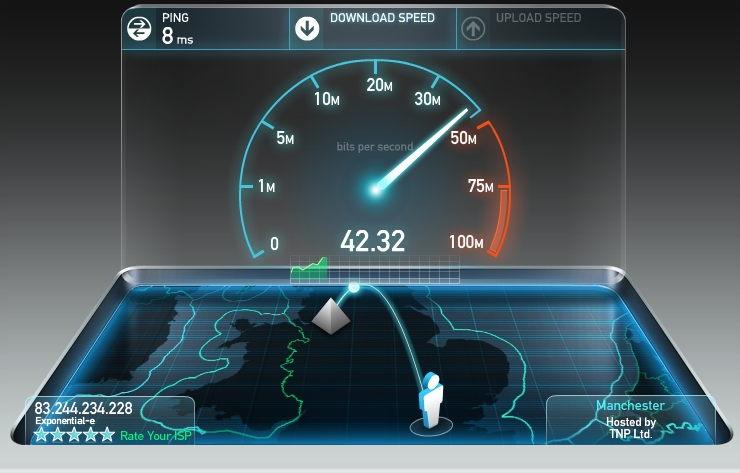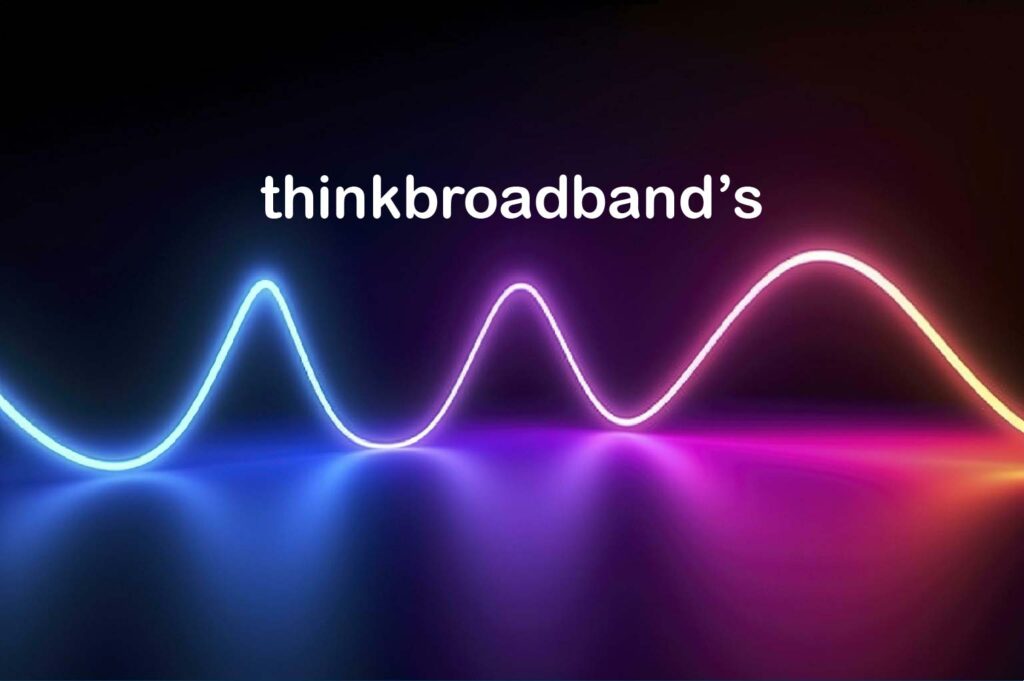Ever felt frustrated when your Wi‑Fi lags or videos buffer endlessly? In today’s always‑connected world, knowing the real performance of your broadband connection is essential. Enter thinkbroadband, a trusted UK‑based platform that offers a speed test tool built for accuracy and clarity. Whether you’re a tech enthusiast or a savvy home user, this guide will walk you through how to use ThinkBroadband’s speed test effectively to monitor and understand your internet performance.
What Is ThinkBroadband’s Speed Test?
ThinkBroadband provides a web-based broadband speed test that works across devices—from PCs and tablets to smartphones and game consoles. It’s designed to test both single-thread (tbbx1) and multi-thread (HTTPx6) download speeds, helping you pinpoint real-world performance. The test typically finishes within 20–60 seconds and logs results for anomaly detection and long-term tracking
Why It Stands Out
- Dual testing mode: You get both TBBx1 (single file) and HTTPx6 (six simultaneous files), which helps uncover congestion or device issues.
- Detailed analysis: Post‑test, thinkbroadband provides quality grades (A to F) based on speed consistency and buffer bloat, not just raw numbers.
1. Prepare Your Setup
To get the most accurate results:
- Use a wired connection: Connect your device via Ethernet to eliminate Wi‑Fi interference.
- Close background apps: Shut down other apps or downloads that could consume bandwidth.
Navigate to the Speed Test
Head to thinkbroadband Broadband Speed Test page, which runs smoothly on modern browsers
. Run the Tests
- The tbbx1 test runs first (single download thread)—good for simulating video streaming.
- Next, the HTTPx6 test runs (six simultaneous connections), offering a performance baseline under heavier loads.
Review Your Results
Look at:
- Average HTTPx6: Your go‑to figure for general speed reference.
- TBB vs HTTPx6 consistency: Gaps may indicate congestion or local network issues.
- Quality and buffer bloat grade: A = ideal; E–F = poor, possibly impacting streaming or real‑time use.

Understanding What the Results Mean
Download Speed & Streaming Quality
- 0.5–2 Mbps: Suitable for basic browsing or SD video.
- 5 Mbps and above: Smooth HD streaming. These are general benchmarks provided by ThinkBroadband.
Congestion & Variability
If TBBX1 speeds fluctuate significantly while HTTPX6 remains high, that’s usually a sign of congestion—either on your Wi‑Fi network or your ISP’s network during peak hours.
Buffer Bloat Grades
ThinkBroadband grades your connection’s stability (through buffer bloat metrics) as follows.
- A (under 0.8): Excellent stability—ideal for streaming, gaming, and calls.
- B–C (0.8–1.8): Acceptable, though minor fluctuations may appear.
- D–F (1.8+): Potential issues—buffering, lag, and uneven performance likely.
Conclusion & Call to Action
Reliable internet is the backbone of modern life—and using thinkbroadband’s speed test gives you a clear, data-driven view of your broadband performance. From single and multi-thread testing to insightful quality grades, it equips you with the knowledge to diagnose issues and make improvements.
Ready to take control of your connection?
Jump over to thinkbroadband’s speed test now, run a few rounds, and start tracking your internet’s true performance. If you’re concerned about persistent fluctuation, consider scheduling tests at different times and comparing results or exploring your router’s settings and firmware. And if you want help interpreting results or improving home network performance, drop a comment or reach out to our tech community—we’ve got your back.
FAQs
1. Is ThinkBroadband’s speed test free to use?
Yes. The ThinkBroadband speed test is completely free and can be used as often as you like. There’s no account required, although creating one allows you to log and compare results over time.
2. Do I need to download software to run the test?
No. ThinkBroadband’s speed test runs directly in your web browser—desktop or mobile. There’s no need to install extra apps or plugins.
3. Why does ThinkBroadband run two tests (tbbx1 and HTTPx6)?
The tbbx1 test simulates a single file download (similar to video streaming), while HTTPx6 uses six simultaneous connections to measure peak throughput. Running both helps you spot congestion, bottlenecks, or Wi-Fi interference.
4. How accurate is ThinkBroadband compared to other speed tests?
ThinkBroadband is known for its high reliability and transparency. Unlike some tests that only measure peak speed, it provides detailed results—including quality grading and buffer bloat—making it a favorite among tech users and broadband analysts.
5. Can ThinkBroadband help me diagnose slow internet?
Yes. The test highlights whether issues are caused by:
- Wi-Fi interference (if wired speeds are higher than wireless)
- ISP congestion (if results drop significantly during peak hours)
- Bufferbloat or network instability (low quality grade)
6. What is bufferbloat, and why should I care?
Bufferbloat happens when excess latency is introduced by network equipment buffering too much data. It causes lag in video calls, gaming, or streaming. ThinkBroadband grades buffer bloat from A–F, giving you an easy indicator of stability.
7. Should I use Ethernet or Wi-Fi when testing?
For the most accurate measurement, always connect via Ethernet cable. Wi-Fi results can be affected by distance, interference, and device limitations.
8. Can I monitor my internet performance over time?
Yes. With a ThinkBroadband account, you can log results and even use their Broadband Quality Monitor (BQM) for continuous latency and packet loss tracking—great for advanced monitoring.
9. Does ThinkBroadband work outside the UK?
While the service is UK-based, anyone worldwide can use the speed test. However, non-UK users might experience slightly higher latency due to server location.
10. What should I do if my speeds are consistently lower than my ISP’s promise?
- Run multiple tests at different times of the day.
- Compare wired vs. wireless results.
- Record your findings.
If slow speeds persist, share your ThinkBroadband logs with your ISP—it strengthens your case when requesting support or contract adjustments.
Looking beyond broadband? Technology is also reshaping other sectors like railways. Check out our WNXX latest news on UK railway traction to see how connectivity and innovation are driving changes across the UK transport network.




